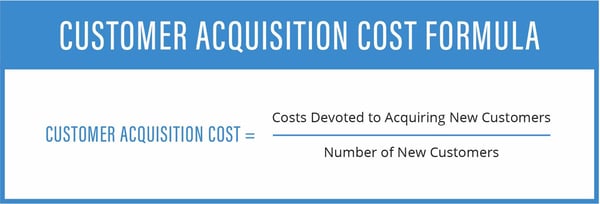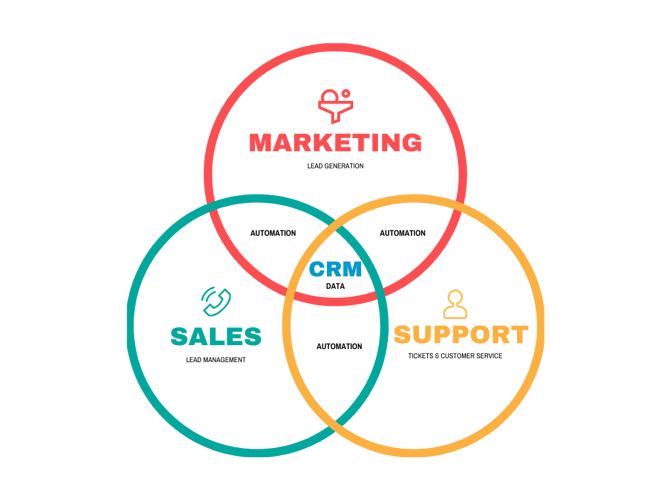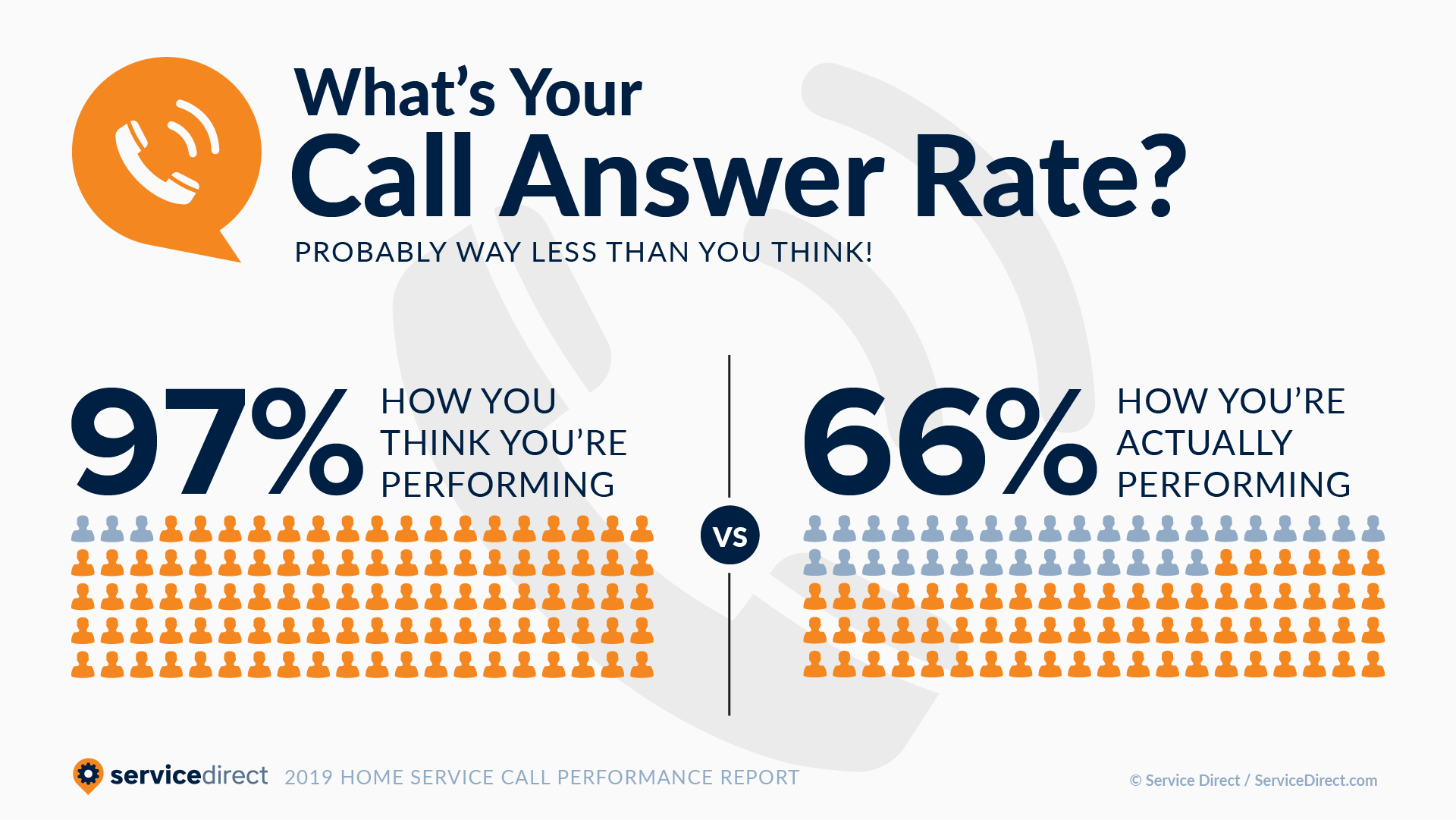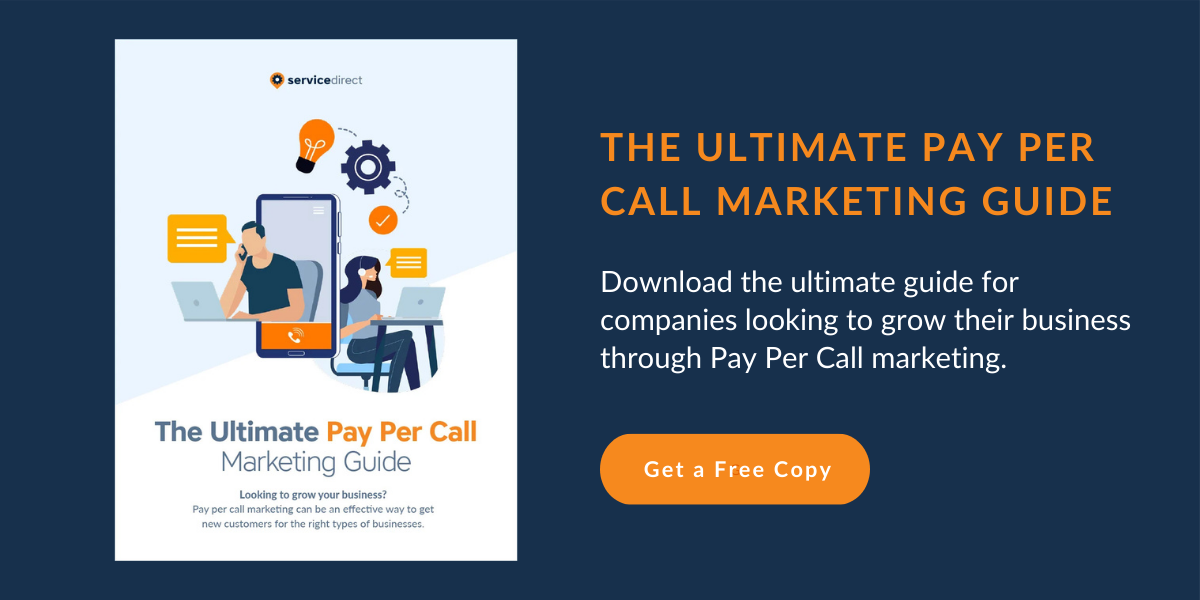Getting The Most Out Of Your Lead Generation Tactics During A Pandemic
When times are good, it’s easy to live high on the hog. Record unemployment, all-time stock market highs, and cheap money are recipes for business success. Marketers look like geniuses when the new customers continue to flow in and the top line keeps climbing up and to the right. But the downside to success that comes so naturally is that it’s easy to lose sight of the key components that dictate successful marketing campaigns. Key executives stop asking difficult questions and a degree of accountability is lost.
Then, in a moment, everything changes. The business climate shifts dramatically and all of a sudden the faucet slows to a drip. Many companies completely lose their footing and panic. Others get back to asking the tough questions and making sure every dollar they spend on marketing has a measurable return that ensures business profitability and sustained success through challenging times. For those that do survive (and even thrive), when the storm passes they’re left with a stronger company and greater market share.
So how can your local service business weather the storm and gain an advantage over your competitors during these unprecedented times? Let’s dive into some best practices and strategies that you can employ to keep your employees busy and the lights on without having to spend more on marketing.
|
Key Takeaways |
Know Your Numbers
These seem so basic, most marketers will roll their eyes and say ‘well, duh!’, but we speak with dozens of local service businesses every day, totaling thousands upon thousands of conversations annually, and virtually none of them know these basic statistics. That data gap makes decision-making fraught with challenges in the best of times, but it’s typically fatal during difficult times.
Cost to Acquire a Customer (CAC)
How much does it cost you to acquire a customer for each marketing channel you utilize? Again, it seems like such an easy question to answer, but when you actually dive into the numbers with local service businesses, you start to realize that whatever data they think they have isn’t accurate. Why? Tracking remains a challenge for most businesses Despite a plethora of tools available to get better tracking on both online and offline marketing, very few businesses invest in these tools, so whatever data they capture is frighteningly inaccurate. And as we mentioned above, too many businesses are making critical decisions based on flawed data.

Customer Lifetime Value (CLV)
How much is a customer worth to your business? It’s a factor of the value you are able to charge for your services, and the average number of times a customer will purchase your services. We’ll speak more on how to improve this metric later, but if you don’t know what a customer is actually worth to your business, you don’t won’t know what constitutes success from a marketing perspective.
Invest In Tracking Tools
If you don’t have a CRM - get one. You might be thinking, "Wait, what? I’m fighting for survival and you want me to spend money?" Yep. That's right. Invest in your success. The times have changed, and now it’s more important than ever to be able to communicate efficiently and effectively.

If you do have a CRM, make sure you’re getting the most out of it with marketing automation and lead management tools. In a recent study we conducted for local service businesses, we were surprised to learn that 82% of businesses are using manual methods to manage their leads, like pen/paper, spreadsheets, and folders.
If you think about the relationship between a car and its driver, a car has specific capabilities and the driver is going to take stock of those capabilities and decide what to do and where to go based on their needs. The car alone is valuable but has no direction or purpose without the driver. The same goes for your CRM. The Car is your CRM, and the Driver is your marketing automation and lead management tools. Or if it were a human body, the CRM would be the Brain.

Your CRM is meant to capture all interactions and data points from leads and customers at any point during the customer journey, and your lead management and marketing automation tools use that data to help turn it into a platform for profitability.
Here are some of the main benefits we see from investing time and resources in our CRM and tracking tools.
Track All Critical Data Points And Interactions Across Teams In One Place.
About a year ago, we made a big shift from using several disparate tools for managing our leads and communicating with prospects and customers, and we migrated everything to a single tool that serves as our CRM and has Lead Management, Marketing Automation, and Customer Support systems as well. That means we have a record of every engagement and communication for a given contact from the first interaction to the last, along with tracking critical demographic and firmographic information. This helps bridge the communication gaps across teams, as well as set you up to automate time-sucking manual tasks, and bubble up the most important leads to the top.
Understand And Invest In What Is Working In Real Time.
First and foremost, we use our CRM to know where our leads are coming from if they came from a paid source or an unpaid source, and then we look at the rate that those leads turn into a customer. In other words, getting the Cost Per Acquisition by marketing channel. This will help you understand where you need to spend your money and where to trim the fat. For example, if you learn that a specific marketing channel, let’s say Paid Social, has a significantly lower Cost Per Acquisition than Paid Search, you may consider doubling down on Paid Social by pulling budget from Paid Search in order to increase lead volume without spending an extra dime.
Ensure Every Qualified Opportunity Is Worked.
I can’t tell you how many times we found quality lead months down the road that was just straight-up missed. It fell through the cracks for no other reason than we didn’t have a CRM with the capability to identify leads that have been worked vs new leads vs leads in progress vs leads that have been closed. Even worse, we paid good money to get that missed lead. Fast forward a few years, and now we have the systems in place where every new opportunity is assigned to someone and a task is set to follow up with them immediately. And if the Deal isn’t closed in that initial interaction, another task is set, and another and another, until the Opportunity is Closed Won or Closed Lost.
Keep Sales Focused On What Matters.
One you’ve figured out how to make sure qualified opportunities are assigned to sales reps. Next is making sure unqualified leads don’t get in front of them in the first place. If a prospect isn’t ready to buy, or maybe doesn’t meet your qualification criteria, use marketing automation to nurture that prospect by continuing to communicate with that prospect
Eliminate Costly Time Vampires.
These include but are not limited to calling leads/deals that are already in progress, accidentally calling leads/deals that are already customers, wasting time on unqualified leads, reviewing leads one by one to see what the status is and if they need following up, calling or emailing leads with bad contact information, redundant activities when multiple reps are working the same lead, lengthy conversations needing to “save face” if two different salespeople set different expectations...the list could go on.
Lean on Your Existing Customer Base
When we discuss lead generation marketing efforts, most mindshare (and spend) is focused on new customer acquisition. But the reality is that for most local service businesses that have been in business for at least a few years, existing customers make up more than 50% of their annual sales, with well-established businesses seeing 70-80% of their annual sales coming from existing customers.
But despite this reliance on existing customers, very few local service businesses are laser-focused on remarketing to their existing customer base in order to generate leads for additional services. But by leaning on your most valuable asset, happy customers, you can intentionally drive up the lifetime value of a customer and make referrals an even bigger part of your growth.

When it comes to outbound remarketing, the extent of those efforts is typically a monthly email newsletter. According to Oberlo, 80% of SMBs utilize email marketing for customer retention, but these canned messages don’t really scratch the surface on what’s possible when it comes to driving consistent demand generation from existing customers. Your customers are varied, and each has their own preferred method of communication. But one thing almost all of them have in common is a propensity to respond to marketing that is personalized to them.
So how can you tailor your remarketing efforts to drive more engagement and get existing customers to purchase your services again?
Push Timely Offers Based on Past Service History
Everyone likes a discount. And if that discount is combined with a convincing message regarding the necessity of additional services, more of your existing customers will purchase those services.
As an example, if you’re a plumbing company, how many water heaters did you install in 2018? How many of those customers have flushed that water heater, ensuring that mineral deposits won’t corrode the tank and reduce its lifespan? How many aren’t aware this simple service can ultimately save them money over the long-term?
Identify all of those customers, and create a concise, compelling message around the need for this service, and since they’re a past customer, offer them a slight discount. You’ll be surprised at just how many will take you up on the offer. And while you’re in the house, it’s a perfect opportunity to inspect critical plumbing infrastructure to identify any areas of concern the homeowner may want to address while you are there.
Email, Text, Social Media and Phone Are Your Friends...Use Them
Ok, so you’ve thought of some unique ways you can engage your existing clients in a personalized way. Now how do you communicate that message to them? Each customer has a preferred method of communication, but absent knowing that, you try them all. Send them a short text message (but remember, personalize it!), call them by phone, send them an email. If you have a Facebook page and can find these customers there, reach out to them with your offer.
By utilizing multiple channels to engage your customers, and personalizing that engagement, you’ll see more success!
Create A Referral Program
We recently surveyed local SMBs, and 91% said Referrals is their most effective lead generation tactic. But despite this, very few actually focus on making referral marketing work for them. Instead, they rely on organic word-of-mouth referrals to generate new customers. But by actually implementing a referral marketing strategy and executing on that plan, you can not only attract new customers, you can attract the best type of new customers: ones that already trust your business due to a personal connection from someone they trust! There’s no shortage of referral marketing solutions out there, so consider investing in a tool that can help you leverage your existing happy customers to get more happy customers!
Optimize Your Sales Process
Fundamentally, many local SMBs mis-understand what lead generation is and what it isn’t, and because of that, lose sight of their role in the success of any lead generation tactic they employ. As an example, our company generates phone leads for local service businesses. The product we are selling to our clients is a phone call from potential customers, yet 35% of all calls we generate for our clients go unanswered. Yikes! Imagine a pizza restaurant that dropped 1 out of 3 pizzas that came out of the oven onto the floor before it reached the customer’s table. But that type of inefficiency exists in virtually every local service business, and it has profound effects on the efficacy of any lead generation services they are using.
Regardless of the lead generation platforms you’re currently utilizing (or ones you have used in the past), there is a truism to those services:
Some companies have experienced tremendous success with those platforms, and others have struggled mightily. For those in the latter category, it’s very easy to write off that service without any thought as to why competitors see so much success. Remember, lead generation, by definition, is an opportunity for you to convince a potential customer that you are the right choices for their needs. Inherent in that definition is that it’s up to you to close the deal. Some companies are obsessed with doing that better, while others put no thought into what is required to take opportunities and turn them into money. Guess who is going to come out of this pandemic with greater market share and who is likely to go under water?
Lead generation services can vary wildly, but when it comes to your ability to optimize those services to drive more value for your company, there are 2 crucial components you must be focused on:
-
-
- Availability & Responsiveness
- Sales Techniques
-

Availability & Responsiveness
We mentioned the statistic above regarding the phone call answer rate we see from our customers. We have clients that answer 98% of their calls, and others that answer 40%. Guess who sees better results?
For lead generation services that send customer information via email or text message, some companies respond to those inquiries within seconds, while others can take up to a couple of days to respond. It’s not hard to guess who sees more success with those types of lead generation tactics.
If you can’t be available and responsive in the moment a potential customer is interested in your service, the likelihood of you winning their business drops dramatically. Look at this way: the lead generation company is bringing a potential customer to your door and that customer is knocking. How long will they wait for you to come to the door and talk with them? Not long. They are on to the next business that can help them, and chances are they are going to work with the one that responds first.
Sales Techniques
Let’s assume you answer the door quickly...now you’re talking to the potential customer. Congrats! Whether you realize it or not, you’re now engaged in a sale. That means you have to sell your business. Do you know how to actually do that? Most local service businesses have no concept of the components that drive successful sales engagements. We have the benefit of working with many businesses of varying levels of competency when it comes to sealing the deal during these crucial initial sales engagements, and all of them do the following:
Build Trust
They aren’t going to end up purchasing your service if they don’t trust you. So how can you build trust? In two ways:
-
-
-
-
- Be a Person. When it comes to local services, people buy from people. So if you’re talking to a potential customer, use every opportunity possible to personalize your business. Make sure you capture their name, and make sure to introduce yourself. If they’re describing their situation, or mentioning something regarding their life, use that opportunity to empathize with them and if possible, share your own personal experience similar to theirs.
- Ask Questions. Any seasoned sales person understands the power of asking questions. By doing so, you learn more about the potential customers needs and you reinforce that you care about them. If you understand their needs and ultimately what is important to them, you have a much better understanding of how to frame your services such that they meet those needs. Not to mention the subconscious effect that happens when someone asks questions and genuinely cares about the answers.
-
-
-
Build Value
Many local service businesses make the mistake of commoditizing their services. The pivotal moment usually revolves around pricing. During that initial engagement, it’s important not to focus on pricing, but instead focusing on building value in your services. If you’re a CPA with over 30 years of experience, don’t focus on your hourly rate, focus on your long history of helping clients with the exact same problem save lots of money from your expertise. If you simply mention your hourly rate, then that’s the only thing you’ve left them to judge you on. You’ve commoditized yourself and your work, but you know full well accounting services aren’t all the same, and the costs of those services can vary wildly.
Ask For Their Business
In the seminal sales movie Glengarry Glen Ross, Blake the sales manager, played by Alec Baldwin, writes a simple acronym on a chalkboard: A. B. C. Always Be Closing. For local service businesses, far too many don’t recognize the importance of asking for their business. If you don’t ask for it, you aren’t likely to earn it. So once you’ve built trust and value, ask for their business!
Bringing It All Together
These concepts I’ve discussed here aren’t revolutionary, but they are things that can quickly fall down the priorities list when you’re “too busy” to spend the time and resources to make them a priority. If anything, the pandemic forced us to prioritize and figure out things that we should have a long time ago. And those things are now best practices that we will use for the future. The pandemic forced us to really take a look and focus on what impacted the business the most, and gave us zero margin for error. Hopefully this article can help you identify the gaps that your business can focus on during the quarantine, and ultimately create best practices and tactics that you’ll be able to use to get the most out of your lead generation, pandemic or no pandemic.

.jpg)

